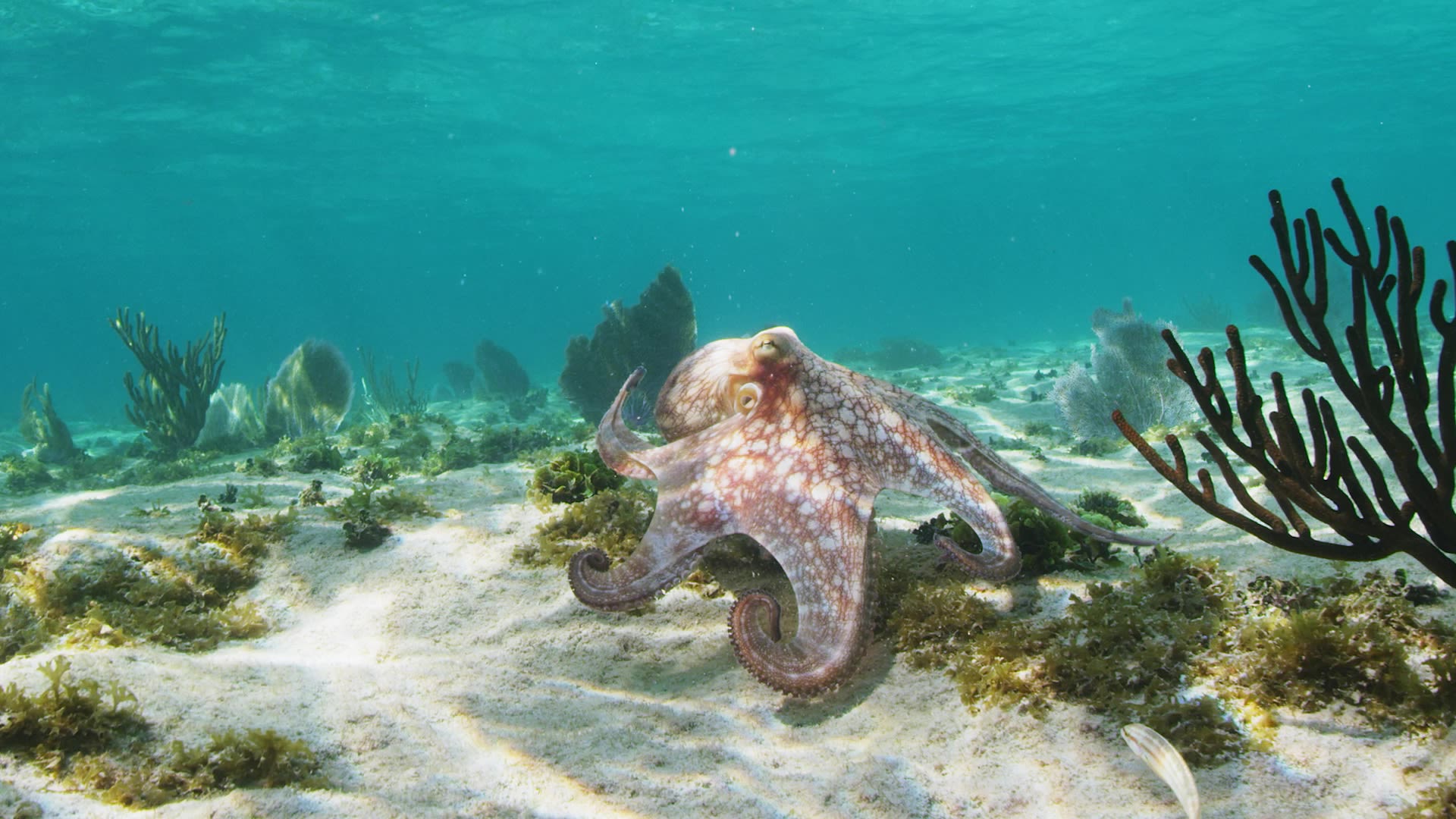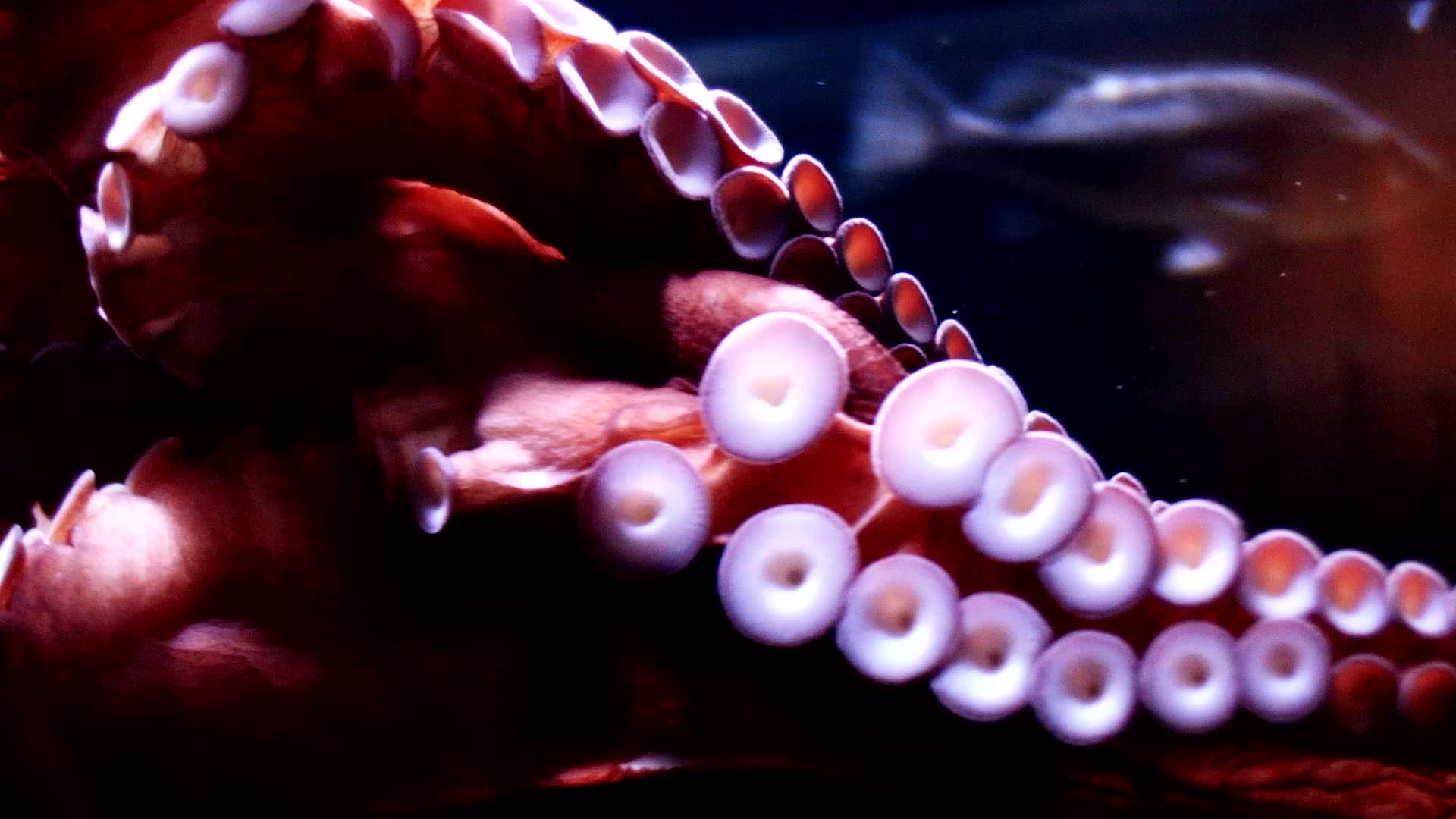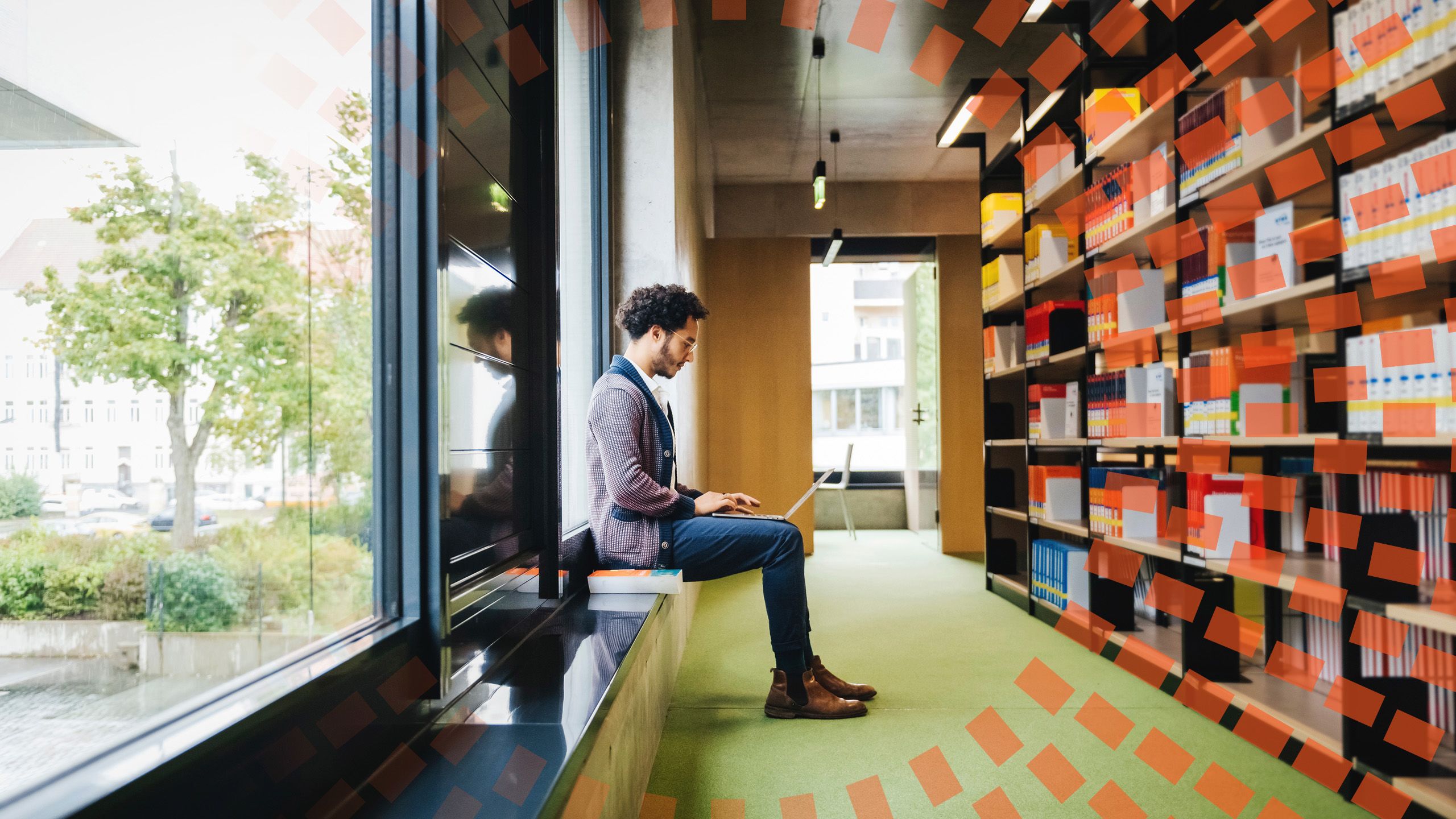What if sea creatures led the next breakthrough in materials science?
by Ian Evans

The ocean is home to some of the most remarkable creatures in existence. From flexible tentacles to dazzling displays of camouflage, the adaptations found in the sea – and in cephalopods in particular – have spurred Nobel-prize winning research and inspired generations of researchers to rethink the boundaries between research areas.
These amazing beings provide a powerful reminder of the way innovative, cross-disciplinary thinking can advance outcomes for all.

An invitation to inspiration
Consider an octopus slipping seamlessly into the contours of a rocky seabed. Its camouflage adjusts in real time to its environment, an awe-inspiring evolutionary adaptation.
For materials scientist Prof. Alon Gorodetsky, University of California, Irvine, this natural phenomenon was an invitation to explore how cephalopod skin could inform human innovations. He explained,
“I walked into a seminar by a colleague named Roger Hanlon, and he was showing a video on what these animals can do – the way they camouflage by changing shape and color.
“I was astonished. I dropped half my research program and transitioned half my group to working on cephalopod inspired materials.”
Today, Alon’s team is engineering mammalian cells to mimic squid camouflage by embedding squid-derived proteins called reflectins into human cell structures — opening up possibilities for all sorts of applications.
- Using chemicals to control cells’ light-scattering properties could lead to sharper medical imaging and even molecular probes for advanced diagnostics.
- The research, published in Elsevier's open access journal iScience, sits at the intersection of molecular biology, synthetic materials, and computational modeling.
Such profound potential is why Alon and co-editor Robyn Crook of San Francisco State University put these amazing creatures at the centre of a special issue of iScience — ‘Cephalopods: Inspired science’.
“Cephalopods are unparalleled models because their biology touches so many scientific domains. From the neurophysiology behind their camouflage to the physical properties of their skin, these animals offer inspiration for both exploring fundamental processes and engineering exciting technologies,” he explained.
“They were at the heart of Hodgkin and Huxley’s Nobel-Prize winning breakthroughs understanding action potentials in neurons, with their research on squid giant axons transforming neuroscience.”
Elsewhere, celaphopod's neurology, flexible arms and dexterous movement have driven progress in disciplines as diverse as, optics, robotics, and materials science.

A bridge for conceptual thinking
Another study in the special issue involves cuttlefish and their ability to form false memories. Researchers explored how these animals remember past events and whether their memories, like ours, can be influenced by misleading information.


Thanks for the (false) memories
Another study in the special issue involves cuttlefish and their ability to form false memories. Researchers explored how these animals remember past events and whether their memories, like ours, can be influenced by misleading information.
The experiment involved presenting cuttlefish with tubes containing shrimp (their favourite snack) crabs, or nothing at all, and then introducing misleading cues to see if their recollection of the shrimp’s location could be altered.
Researchers presented cuttlefish with tubes containing shrimp, crabs or nothing, then introduced misleading cues to see if they’d recall which tubes held snacks.
- With a misleading visual cue, the cuttlefish sometimes “remembered” shrimp in empty tubes — raising questions about memory reconstruction.
- But when smell was added, they were less easily fooled — suggesting olfactory cues anchor memories more firmly.
“What you see in these papers are the kind of conceptual leaps that characterize interdisciplinary science,” said Alon. These breakthroughs only happen when researchers break out of silos.
As research tool Scopus AI shows, that interdisciplinary approach is leading to discoveries that can improve outcomes in a surprising number of fields:
The latest research
Key Findings of Interdisciplinary Research on Cephalopods, via Scopus AI
ScopusAI draws on over 27,000 academic journals, from more than 7,000 publishers worldwide, with over 1.8 billion citations.
Here’s its snapshot of topics in this article.
Recent advances in culture and experimental techniques have sparked a surge of interest in cephalopods as comparative models in neuroscience, cognition, behavior, and ecology.
Breakthroughs in funding, modern techniques, and facilities have broadened the field of cephalopod research, attracting researchers from other models and allowing established labs to collaborate more widely.
Cephalopods play an important role as keystone invertebrates in marine ecosystems and are a valuable fisheries resource, leading to discussions on challenges and future research directions in cephalopod research.
The inclusion of “live cephalopods” in the EU Directive on the “Protection of Animals used for Scientific Purposes” has significant implications for neuroscience research, requiring projects to justify and adhere to ethical guidelines.
Recent progress in genomics has accelerated the pace of cephalopod research, transitioning traditional areas focusing on evolution, development, behavior, and neurobiology to molecular approaches.
Technological advancements in sequencing, imaging, and genetic manipulation have opened new avenues for exploring the biology of cephalopods, leading to the consolidation of efforts and collaboration in this rapidly evolving field.
A moment that demands interdisciplinary thinking

Many of the most important scientific questions exist at the borders of disciplines, says Maria Mytiliniou, Scientific Editor of iScience.
“Interdisciplinarity has always been important, but matters now more than ever” she said.
“The challenges that we face – from climate change to public health, to food safety - require diverse scientific expertise to spark solutions. Part of our goal was to celebrate that interdisciplinary collaboration and inspire others.”
That, Maria argues, also underscores the responsibility of journals to facilitate, promote, and advocate for interdisciplinary research.
When a researcher is seeking articles outside their realm of expertise, they need to be confident in the content.
“That’s why at iScience we have a big editorial team and advisory board with diverse expertise,” Maria said. “We need to cover the different areas of expertise, and find the right reviewers and editors to curate, connect and promote relevant research. She continued:
“Interdisciplinary work requires more than just enthusiasm; it needs systemic support.” Journals can bring together studies that help researchers find common ground. Special issues, thematic clusters, and open-access models all make new findings accessible and foster meaningful dialogue across disciplines."
Where it stands: Publication data from Scopus show strong growth in interdisciplinary research output, with China and the U.S. leading in scientific publications by volume.
The trend toward collaborative, cross-disciplinary science continues to accelerate globally, though verifiable, field-specific data on interdisciplinary output by country are inconsistent.
An expert's advice

Interdisciplinary science requires teamwork, a pioneering spirit, and risk tolerance, but Alon emphasizes humility when entering new fields.
His advice: “You’re not just an expert coming to impose knowledge. You’re there to learn and contribute equally.” Here’s what he suggests…
- Attend seminars outside your specialty.
- Forge partnerships across departments.
- Stay curious about how seemingly unrelated phenomena might intersect.
- Be willing to take risks and learn new things.
Take it from a cephalopod. In a world where the next big idea could come from the most unexpected connection, adaptability can be a researcher's greatest asset.
Continue your journey



